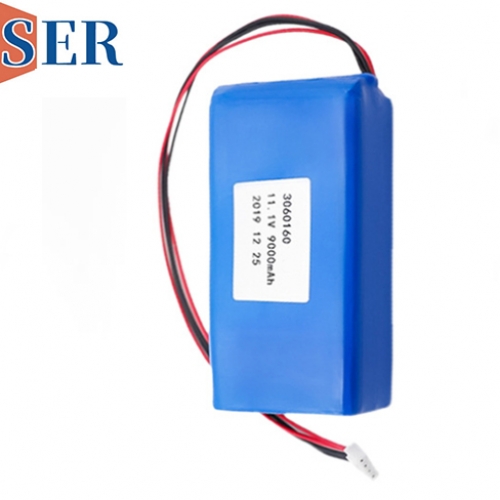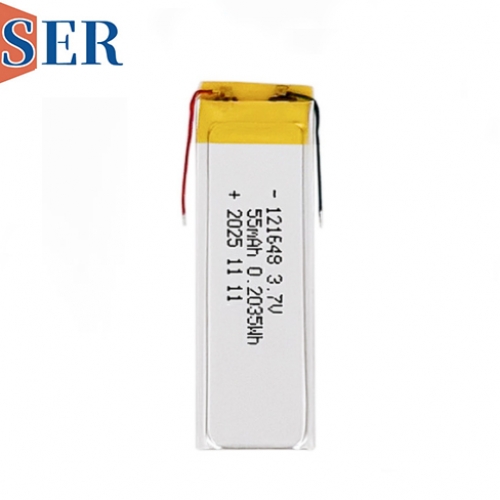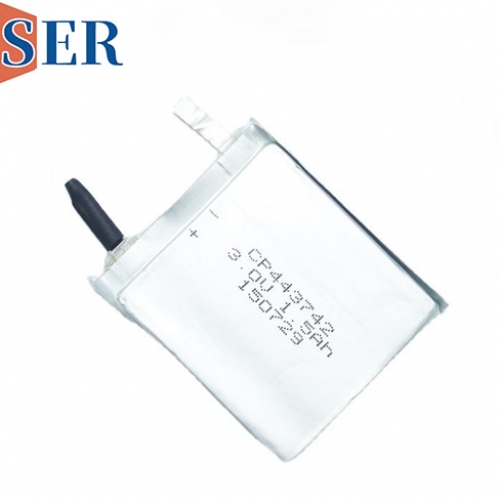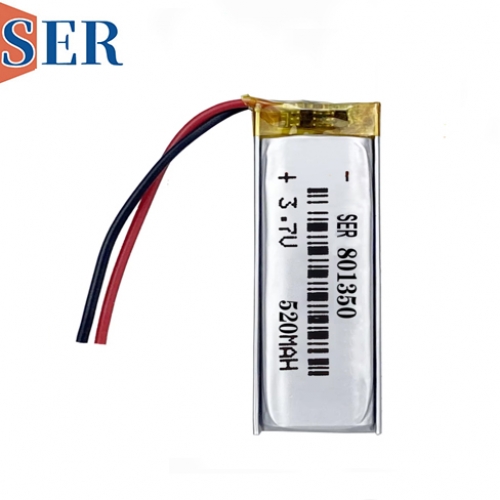Ultra Thin Non-Magnetic Battery 014460: A Comprehensive Analysis of 3.7V Rechargeable Lithium Polymer Technology
Ultra Thin Non-Magnetic Battery 014460: A Comprehensive Analysis of 3.7V Rechargeable Lithium Polymer Technology
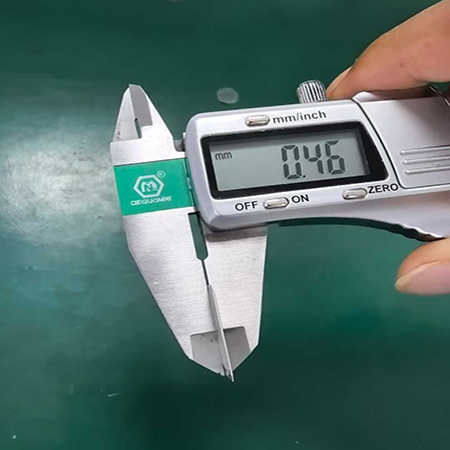
Abstract
The evolution of portable electronics has driven the need for increasingly compact, lightweight, and efficient power sources. Among these advancements, the Ultra Thin Non-Magnetic Battery 014460, a 3.7V rechargeable lithium polymer (LiPo) battery with a thickness of just 1mm, stands out as a revolutionary solution. This paper delves into the technical specifications, design principles, applications, and competitive advantages of this ultrathin non-magnetic battery, exploring its impact on industries ranging from wearable technology to medical devices.
Keywords: Ultrathin Battery, Ultrathin LiPo Battery, Non-Magnetic Battery, Ultrathin Non-Magnetic Battery, 3.7V Ultrathin Non-Magnetic Battery
1. Introduction
The proliferation of smart devices, IoT (Internet of Things) gadgets, and wearable technology has necessitated the development of batteries that can deliver high energy density while occupying minimal space. Traditional battery technologies, such as nickel-cadmium (NiCd) and nickel-metal hydride (NiMH), have been largely supplanted by lithium-ion (Li-ion) and lithium polymer (LiPo) batteries due to their superior energy density, lower self-discharge rates, and rechargeability. However, the quest for even smaller, lighter, and more flexible power sources has led to the emergence of ultrathin LiPo batteries. Among these, the Ultra Thin Non-Magnetic Battery 014460 represents a significant breakthrough, offering a 1mm thickness and a voltage output of 3.7V, making it ideal for applications where space and weight are critical constraints.
2. Technical Specifications of the 014460 Battery
The Ultra Thin Non-Magnetic Battery 014460 is engineered to meet the stringent requirements of modern portable electronics. Its key technical specifications include:
Capacity: Typically ranging from 20mAh to 100mAh, depending on the specific model variant.
Voltage: 3.7V nominal, with a discharge cutoff voltage of 3.0V to prevent over-discharge.
Thickness: A mere 1mm, allowing it to be integrated into ultra-slim devices.
Dimensions: Compact form factor, often designed to fit into spaces as small as 14mm x 46mm (hence the model number 014460).
Weight: Approximately 0.5g to 2g, depending on capacity, making it one of the lightest batteries in its class.
Cycle Life: Up to 500 charge-discharge cycles, with proper care and maintenance.
Operating Temperature: -20°C to +60°C, ensuring reliability in diverse environmental conditions.
3. Design and Construction
The design of the 014460 battery is a testament to the advancements in material science and manufacturing processes. It utilizes a multilayer polymer electrolyte sandwiched between anode and cathode layers, all encapsulated in a flexible, non-magnetic foil casing. This design offers several advantages:
Flexibility: The polymer electrolyte allows the battery to bend and flex without compromising performance, making it suitable for curved or irregularly shaped devices.
Non-Magnetic Properties: The absence of magnetic materials ensures compatibility with sensitive electronic components, such as those found in medical implants or aerospace applications.
Safety: The use of solid-state polymer electrolytes reduces the risk of leakage and thermal runaway, common issues with liquid electrolyte-based Li-ion batteries.
Scalability: The manufacturing process can be easily scaled to produce batteries of varying capacities and sizes, catering to a wide range of applications.
4. Applications of the 014460 Battery
The ultrathin, non-magnetic, and rechargeable nature of the 014460 battery makes it suitable for a multitude of applications across various industries:
4.1 Wearable Technology
The rise of smartwatches, fitness trackers, and augmented reality (AR) glasses has created a demand for batteries that can power these devices without adding bulk. The 014460 battery's 1mm thickness and lightweight design make it an ideal choice for such applications, enabling longer battery life and more comfortable wear.
4.2 Medical Devices
In the medical field, where space and weight are at a premium, the 014460 battery can power implantable devices, such as pacemakers, neurostimulators, and drug delivery systems. Its non-magnetic properties ensure it does not interfere with magnetic resonance imaging (MRI) or other diagnostic procedures.
4.3 IoT Sensors
The Internet of Things (IoT) relies on a vast network of sensors to collect and transmit data. The 014460 battery can power these sensors, enabling them to operate for extended periods without maintenance, particularly in remote or hard-to-reach locations.
4.4 Aerospace and Defense
In aerospace and defense applications, where every gram of weight reduction can significantly impact performance, the 014460 battery can power small electronic components, such as communication devices, navigation systems, and surveillance equipment.
5. Competitive Advantages
The Ultra Thin Non-Magnetic Battery 014460 offers several competitive advantages over traditional battery technologies and even other ultrathin LiPo batteries:
Superior Energy Density: Despite its small size, the 014460 battery delivers a high energy density, allowing it to power devices for longer periods between charges.
Enhanced Safety: The solid-state polymer electrolyte and non-magnetic casing reduce the risk of leakage, thermal runaway, and interference with sensitive electronics.
Customizability: Manufacturers can tailor the battery's capacity, size, and shape to meet specific application requirements, providing greater design flexibility.
Cost-Effectiveness: The scalable manufacturing process and long cycle life contribute to a lower total cost of ownership over the battery's lifespan.
6. Environmental Impact and Sustainability
As the world becomes increasingly conscious of environmental issues, the sustainability of battery technologies has come under scrutiny. The 014460 battery addresses several of these concerns:
Recyclability: The materials used in its construction, such as lithium, cobalt, and aluminum, can be recycled, reducing waste and conserving natural resources.
Energy Efficiency: Its high energy density and rechargeability reduce the need for frequent battery replacements, lowering the overall environmental footprint.
Longevity: With a cycle life of up to 500 charges, the 014460 battery can outlast many traditional batteries, further reducing waste.
7. Challenges and Future Developments
Despite its numerous advantages, the 014460 battery is not without its challenges. The manufacturing process for ultrathin LiPo batteries is complex and requires precise control to ensure consistent quality. Additionally, the high cost of raw materials, such as lithium and cobalt, can impact production costs.
Looking ahead, several developments could further enhance the capabilities of the 014460 battery:
Solid-State Batteries: Research into solid-state electrolytes could improve safety and energy density, paving the way for even thinner and more powerful batteries.
Lithium-Sulfur and Lithium-Air Batteries: These emerging technologies offer the potential for significantly higher energy densities, although they are still in the experimental stage.
Nanotechnology: The use of nanomaterials in battery construction could improve conductivity, reduce internal resistance, and extend cycle life.
8. Conclusion
The Ultra Thin Non-Magnetic Battery 014460 represents a significant leap forward in battery technology, offering a compact, lightweight, and rechargeable power source for a wide range of applications. Its 1mm thickness, 3.7V output, and non-magnetic properties make it an ideal choice for industries where space, weight, and safety are paramount. As technology continues to evolve, the 014460 battery is likely to play a pivotal role in powering the next generation of portable electronics, wearable devices, and IoT sensors, driving innovation and shaping the future of energy storage.
In conclusion, the 014460 battery is not just a product of modern engineering; it is a catalyst for change, enabling the development of smaller, smarter, and more sustainable devices that will transform the way we live, work, and interact with the world around us. As researchers and manufacturers continue to push the boundaries of what is possible, the future of battery technology looks brighter than ever.


